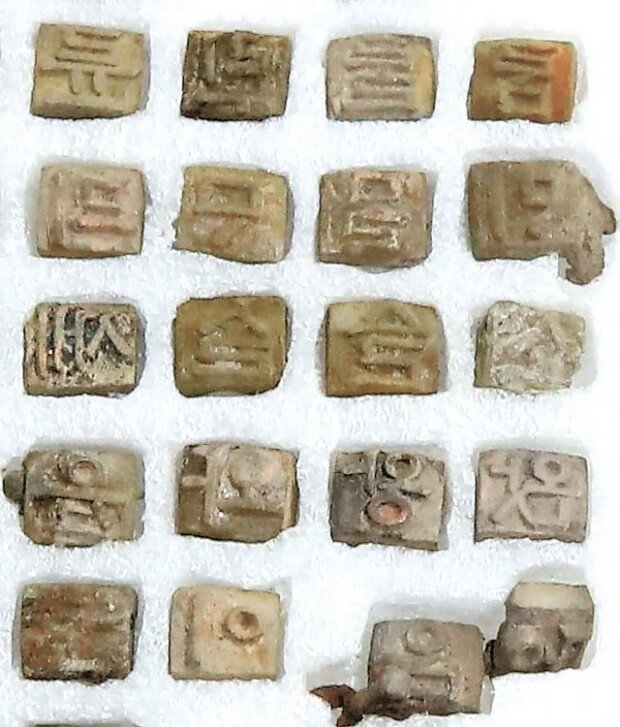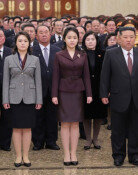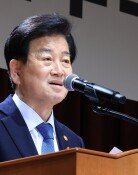Oldest Korean-letter metal type blocks from King Sejong’s reign are found
Oldest Korean-letter metal type blocks from King Sejong’s reign are found
Posted June. 30, 2021 07:27,
Updated June. 30, 2021 07:27

Over 1,600 metal type blocks from the early Joseon era were found in central Seoul. Some of the blocks were the oldest Korean-letter metal type blocks following the orthography of Hunminjeongeum, a document describing the script of the Korean language, and others are Chinese-character metal type blocks estimated to have been made around the time when Johannes Gutenberg developed metal type for the first time in the West in the 1440s. This is the first time a large variety of metal type blocks was found in a large number in a single location.
The Cultural Heritage Administration revealed over 1,000 Chinese-character metal type blocks and 600 Korean-letter ones excavated last year from Insa-dong, Jongno, Seoul at a press conference held at the National Palace Museum of Korea in Jongno, Seoul on Tuesday. Some of the Chinese-character metal type blocks are believed to be Gapin-letter type created in 1434 under King Sejong. Until the recent discovery, Eulhae-letter type produced in 1455 held the record of the oldest metal type blocks found. Once four or five Gapin-letter type blocks are confirmed through further research, they would be the first metal type blocks created under King Sejong’s reign from 1418 to 1450 and also earlier than Gutenberg’s printing press.
The Korean-letter metal type blocks include those following the orthography of the Dongguk Jeongun used in the 15th century, which would be groundbreaking historical records for research on the Korean language. The Dongguk Jeongun is a Korean dictionary of rhymes that sets out a standard practice for pronouncing Chinese characters in Korean.
beborn@donga.com







